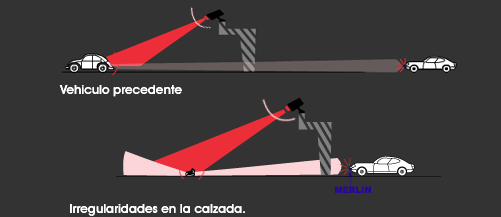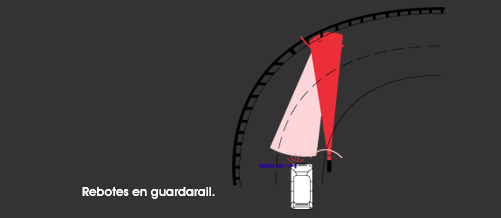 |
 |
Imagine a beam of light projected from a weak, highly concentrated torch. If the beam is aimed at the horizon in the same direction as us, we will only able to detect it when we pass through it (too late).
|
 |
 |
 |
 |
 |
 |
Fortunately, the radio beam is aimed at the road surface (with overhead radars) or almost horizontally, but to one side (roadside tripods). This means that the beam can reflect off small irregularities on the road surface, crash barriers, preceding vehicles, etc.
|
 |
 |
 |
 |
 |
These small reflections can reach the microwave receiver and warn us of the presence of a radar in time. Therefore, it’s obvious that road surface, location, type of radar and traffic all have a decisive influence on the warning distance.
In general, mobile radars are detected well in advance, followed by tripod-mounted radars. The nature of the beam means that least warning is given for overhead radars. |
 |




